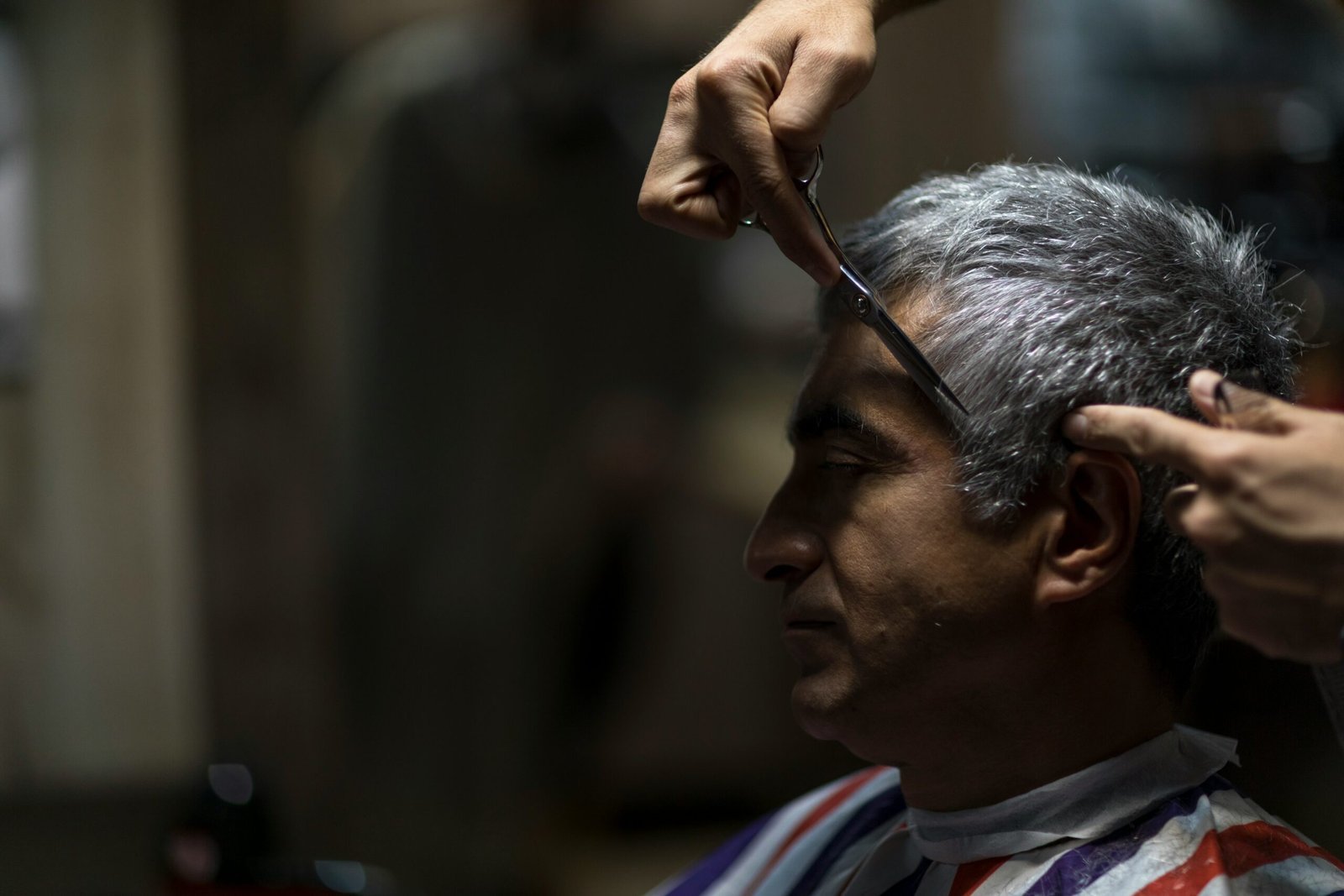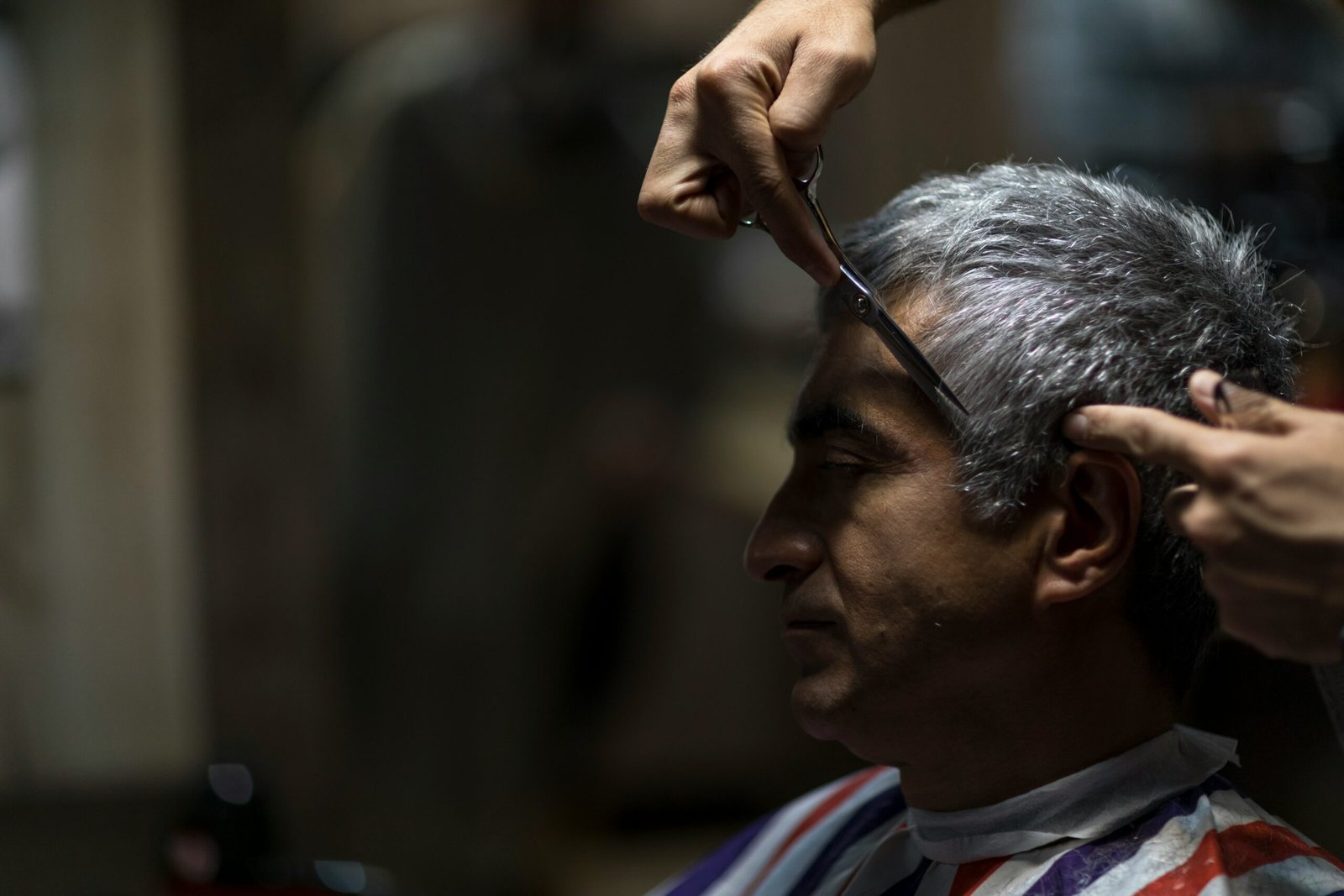
Introduction to Persian Architecture
Persian architecture is a remarkable testament to the rich cultural heritage of Iran, dating back thousands of years. Rooted in ancient civilizations, it has evolved through various historical periods, influenced by diverse cultures and traditions. The architectural style is characterized by its grandeur, intricacy, and a profound connection to the region’s spiritual and social life. Persian architecture is not merely about constructing buildings; it embodies the essence of art, philosophy, and community, serving as a reflection of the society that created it.
One of the most significant aspects of Persian architecture is its ability to integrate natural elements into design. Gardens, courtyards, and the use of water features are commonly found in these structures, symbolizing paradise and providing a tranquil atmosphere. The majestic domes, intricately tiled surfaces, and grand minarets exemplify the technical prowess and artistic vision of Persian architects. Additionally, the use of vibrant colors and geometric patterns serves not only an aesthetic purpose but also demonstrates a deeper metaphysical concept related to unity and infinity.
Persian architecture has experienced periods of transformation, primarily during the Safavid dynasty, when Isfahan emerged as a cultural and architectural hub. The influences of Islamic and pre-Islamic traditions are thus evident in many structures, particularly mosques, which serve as both places of worship and community gathering. The Blue Mosque of Isfahan and the Pink Mosque of Shiraz stand as exemplary representations of this architectural movement, showcasing the interplay of spirituality and artistry. Exploring these iconic mosques allows one to appreciate how cultural narratives are captured through architecture, making it a vital element of Persian identity.
The Historical Context of Isfahan’s Blue Mosque
The Blue Mosque, officially known as Shah Mosque, is one of Isfahan’s most significant architectural landmarks. Constructed between 1611 and 1630 during the Safavid dynasty, the mosque epitomizes the era’s architectural innovation and aesthetic value. The Safavid period marked a time of great cultural flourishing in Persia, distinguished by advancements in art, architecture, and philosophy. The reign of Shah Abbas I played a pivotal role in establishing Isfahan as a center of Persian culture and politics, fostering a spirit of religious and artistic expression notable in the city’s many structures, including the Blue Mosque.
Architecturally, the Blue Mosque is renowned for its stunning tile work, intricate stuccos, and grand domes that manifest the essence of Islamic craftsmanship. The mosque’s design integrates innovations such as the use of an isosceles dome, allowing for a striking play of light within the worship space. This architectural feat not only exemplifies Persian design sophistication but also reflects the socio-political climate of the time, where architecture served as a demonstration of power and piety. As Isfahan became the capital, religious edifices like the Blue Mosque became central to the Safavid identity, symbolizing the dynasty’s commitment to both faith and governance.
Prominent architects, including the celebrated artist Ali Akbar Isfahani, played an instrumental role in the construction of the mosque, blending various stylistic influences to create a harmonious yet complex space. The construction of the Blue Mosque was not only a religious endeavor but also a political statement that conveyed the legitimacy of the Safavid dynasty. Thus, the historical significance of the Blue Mosque transcends its architectural merits, encapsulating the broader narrative of Isfahan’s prominence in Persian history during the Safavid reign.
Architectural Marvels of Isfahan’s Blue Mosque
The Blue Mosque, also known as the Shah Mosque, stands as an outstanding exemplar of Persian architecture in Isfahan, highlighting the intricate beauty that characterizes many Islamic structures. Renowned for its exquisite tile work, the mosque showcases an array of dazzling blue tiles that create a vibrant mosaic effect, captivating visitors from all corners of the globe. The artisans, employing advanced glazing techniques and intricate designs, have crafted a visual narrative that reflects the cultural and spiritual essence of the era.
The dome of the Blue Mosque is another architectural highlight, embodying both aesthetic elegance and structural ingenuity. Rising majestically, its intricate patterns and vibrant colors not only add to the mosque’s grandeur but also serve a functional purpose by promoting acoustics within the prayer hall. The use of geometric shapes and floral motifs throughout the dome and the mosque’s main prayer area introduces a sense of harmony and balance, which is deeply rooted in Persian architectural principles.
Equally remarkable is the calligraphy that adorns the mosque’s interiors and exteriors, featuring verses from the Quran that impart spiritual significance. This mastery of calligraphy, combined with the artistry of tile work, reflects the sophistication of the artisans who hailed from various regions, each contributing to the rich tapestry of Islamic art. These inscriptions not only enhance the visual splendor of the mosque but also serve as a means of communicating religious teachings and historical narratives to observant visitors.
In conclusion, Isfahan’s Blue Mosque epitomizes the essence of Persian architectural mastery. Its stunning tile work, innovative dome design, and intricate calligraphy come together to create an unforgettable experience, drawing admirers to its beauty and cultural significance. The Blue Mosque is indeed a testament to the artistic accomplishments of its creators and remains a place of worship that inspires reverence and admiration.
Cultural Significance of the Blue Mosque
The Blue Mosque, or Masjid-e Sheikh Lotfallah, is a remarkable architectural masterpiece located in Isfahan, Iran. It holds substantial cultural significance not only as a historical landmark but also as a vibrant spiritual hub for the local community. This mosque, renowned for its intricate tile work and stunning dome, is a center of religious activity that shapes the spiritual lives of the people in the region. The architectural beauty of the mosque complements its role as a space where spiritual and communal gatherings regularly occur.
Traditionally, the Blue Mosque has served as a venue for prayer, reflection, and connection among worshippers. Daily prayers, particularly during the holy month of Ramadan, attract crowds seeking to deepen their faith and community ties. Special events, including religious festivals and lectures, further enhance its cultural relevance, allowing local citizens to engage actively with their spiritual heritage. Such practices solidify the mosque’s status not only as a religious structure but also as a cornerstone of community life in Isfahan.
Moreover, the influence of the Blue Mosque extends beyond conventional religious observances. It encapsulates the essence of Persian cultural identity, reflecting the historical and cultural narratives of the region. The mosque has played a role in inspiring contemporary patterns of worship, wherein traditional practices are harmonized with modern expressions of faith. This dynamic interaction fosters a sense of belonging among locals, reinforcing shared values and collective memory.
In essence, the Blue Mosque embodies the intersection of faith, art, and community. It becomes more than just a place of worship; it stands as a powerful symbol of the cultural identity of the Persian people. The spiritual practices and events held within its walls resonate deeply, creating a lasting impact on future generations.
The Allure of Shiraz’s Pink Mosque
Located in the cultural heart of Shiraz, the Pink Mosque, officially known as Nasir al-Mulk Mosque, stands as a remarkable testament to Persian architecture and artistry. Constructed during the Qajar era in the late 19th century, this stunning structure gained its nickname due to the vivid use of pink tiles that adorn its facade and interiors, distinguishing it from other mosques across Iran. The mosque was commissioned by the local aristocracy, intending to create a space that reflects both spiritual and aesthetic values integral to Islamic culture.
The mosque’s architectural design is a harmonious blend of traditional Persian elements and innovative artistry. Featuring intricate stained glass windows, lavish tile work, and calligraphic inscriptions, every aspect of the Pink Mosque is a celebration of color and light. The way sunlight filters through the stained glass creates a mesmerizing kaleidoscope of colors that dance upon the mosque’s walls during the early morning hours. This vibrant display has contributed significantly to the mosque’s allure, attracting both worshippers and tourists alike.
In comparison to Isfahan’s Blue Mosque, which is renowned for its sophisticated geometric patterns and expansive courtyard, Shiraz’s Pink Mosque offers a serene and intimate atmosphere that exemplifies the city’s cultural depth. While Isfahan serves as a bustling hub of architectural brilliance, the Pink Mosque presents a more tranquil experience, inviting visitors to immerse themselves in its serene beauty and historical significance. The juxtaposition of both mosques underscores the rich diversity of Persian architectural heritage, where each location embodies unique narratives and spiritual meanings. The Pink Mosque, with its distinctive charm, provides a compelling complement to Isfahan’s majestic offerings, reinforcing Shiraz’s status as a vital center of Persian art and culture.
Distinctive Features of the Pink Mosque
The Pink Mosque, officially known as Nasir al-Mulk Mosque, stands as a remarkable illustration of Persian architecture, noted for its intricate design and vibrant aesthetics. One of its most striking features is the array of colorful stained glass windows. These windows, often referred to as “kolah farangi,” showcase a mesmerizing play of light, particularly during the early morning hours when sunlight penetrates and creates a kaleidoscope of colors across the mosque’s interior. This unique lighting effect transforms the prayer hall into a serene and captivating atmosphere that enchants visitors and locals alike.
Additionally, the Pink Mosque is renowned for its exquisite tile work that adorns its exterior and interior. The tiles are often intricately patterned with floral motifs and geometric designs, reflecting the rich artistic traditions of the Persian culture. The use of pastel hues, particularly pink and blue, emphasizes the mosque’s ethereal beauty and sets it apart from other mosques across Iran. The façades and domes reflect a harmonious blend of symmetry and ornamentation, encapsulating the spiritual essence of the space.
Furthermore, the mosque’s courtyard also contributes to its distinctive character. It is surrounded by lush gardens and elegant arches, providing a tranquil escape that enhances the overall experience. Visitors often find that the architecture of the Pink Mosque not only serves a functional purpose but also embodies a deep appreciation for Persian craftsmanship, making it a quintessential destination for those seeking to explore the finer aspects of Iranian culture. The mosque is not merely a place of worship; it is a testament to the intricate artistry that defines much of Iran’s architectural heritage, attracting countless admirers from around the globe.
Cultural Importance of Shiraz’s Pink Mosque
The Pink Mosque, officially known as Nasir al-Mulk Mosque, stands as a significant cultural landmark within Shiraz, Iran. Renowned for its stunning architectural design and intricate stained glass windows, it serves more than an aesthetic function; this mosque is a pivotal community gathering place, embodying the spirit and unity of the local population. Each day, it attracts not only devout worshippers but also numerous visitors intrigued by its beauty and historical value.
One of the most notable aspects of the Pink Mosque is its role in local festivals and traditions. The mosque frequently serves as a backdrop for various cultural celebrations, particularly during religious observances. Events such as Eid al-Fitr and Ashura see large congregations, where community members come together, fostering a sense of solidarity. These gatherings promote the sharing of cultural practices, traditional music, and communal prayers, thus reinforcing a shared identity among the residents of Shiraz.
Through its vibrant community involvement and historical significance, the Pink Mosque stands as a testament to the cultural dynamics of Shiraz. It reinforces the notion that architectural landmarks have the capacity to influence social practices and community engagement, making it a vital component of the city’s heritage and contemporary culture.
Comparative Study: Blue Mosque vs. Pink Mosque
The architectural marvels of Isfahan’s Blue Mosque and Shiraz’s Pink Mosque embody the rich cultural heritage and religious significance of Iran. Both mosques showcase intricate designs and artistry that reflect the profound Islamic influence on Persian architecture, yet they present unique characteristics that warrant a detailed comparative analysis.
The Blue Mosque, officially known as the Mosque of Sheikh Lotfallah, is renowned for its stunning azure tiles and harmonious proportions. Built during the Safavid dynasty in the early 17th century, it emphasizes elegance and symmetry. Its azure blue façade and intricate tile work create a sublime visual experience, while the mosque’s dome is particularly noteworthy for its unique design, which enhances acoustics and creates a breathtaking visual from the interior. This attention to detail is not just aesthetic; it also signifies the religious dedication of the Safavid era, embedding a sense of spirituality within the architectural framework.
While both mosques serve as places of worship, Isfahan’s Blue Mosque is a testament to the Safavid architectural style characterized by its understated grandeur, whereas Shiraz’s Pink Mosque exemplifies the vibrant art and design of the Qajar era. Together, they represent the distinct yet interconnected trajectories of Iran’s religious and artistic heritage, inviting admiration for their unparalleled beauty and cultural significance.
Conclusion: The Enduring Legacy of Persian Mosques
The Blue Mosque of Isfahan and the Pink Mosque of Shiraz stand as remarkable symbols of Persian architecture and culture, each reflecting the profound spirituality and artistic genius that characterized the era of their construction. These mosques are not only places of worship but also pivotal cultural icons that encapsulate the rich history and traditions of Iran. Their intricate tile work, grand domes, and reflective pools provide a glimpse into the aesthetic and architectural advancements of their time, fostering admiration from visitors worldwide.
The enduring legacy of these mosques is evident in their continued significance to Iranian society. They serve as vital links between the past and present, showcasing the evolution of Islamic art and architecture. Tourists and scholars alike are drawn to these sites, not only for their beauty but also for the stories they tell. Both the Blue Mosque and the Pink Mosque are often featured in various cultural narratives, emphasizing their role as essential elements within the broader context of Persian heritage.
Moreover, it is crucial to recognize the importance of preserving these architectural wonders for future generations. As cultural landmarks, they have the power to educate and inspire, serving as reminders of the ingenuity and creativity inherent in Persian design. Efforts must be made to ensure their protection, through both conservation initiatives and increased community awareness of their significance. By prioritizing the maintenance of these mosques, we can ensure that the grandeur and cultural richness they embody live on, fostering a deeper appreciation for both Persian history and Islamic architecture.

